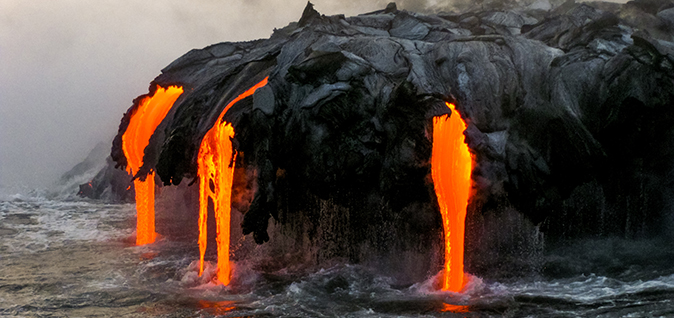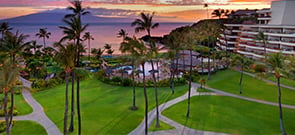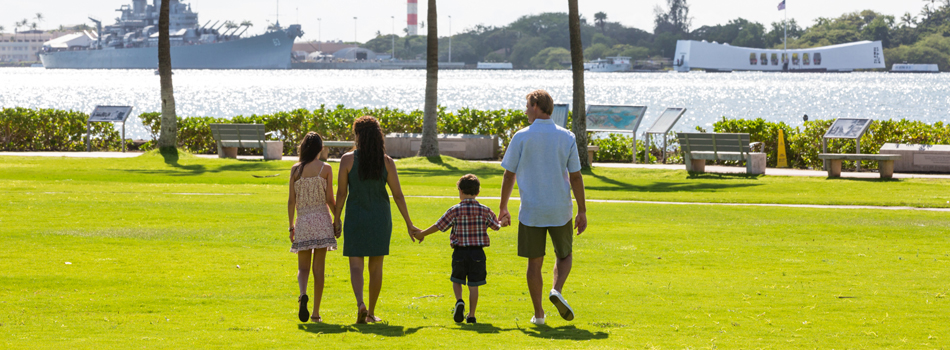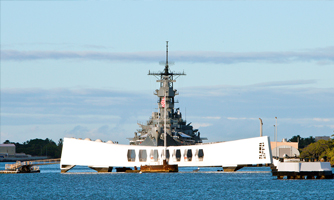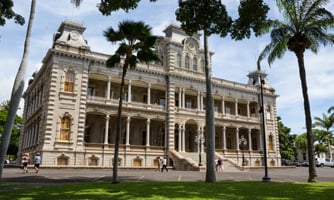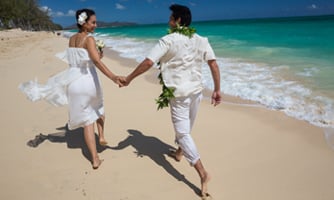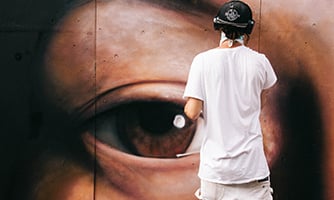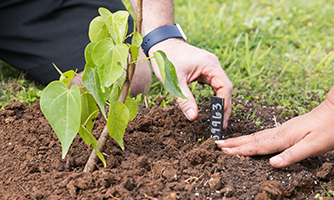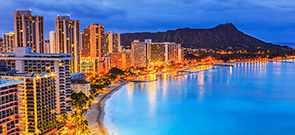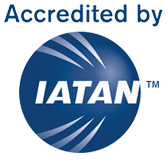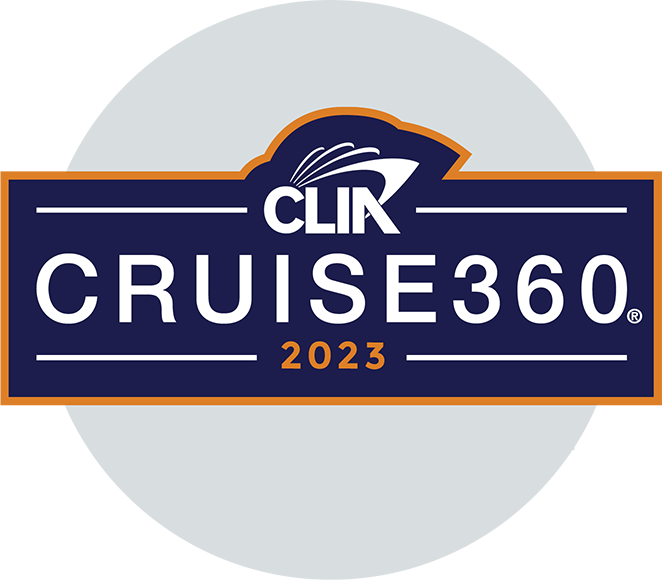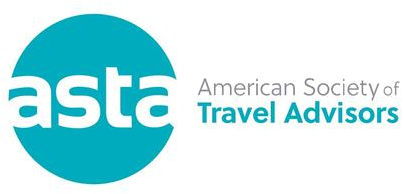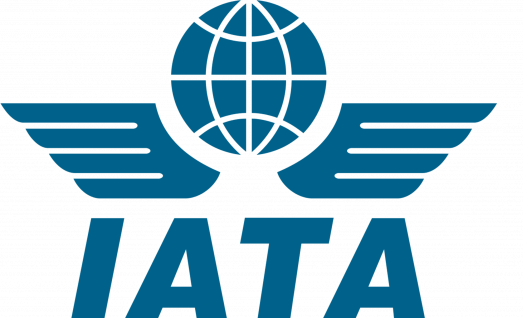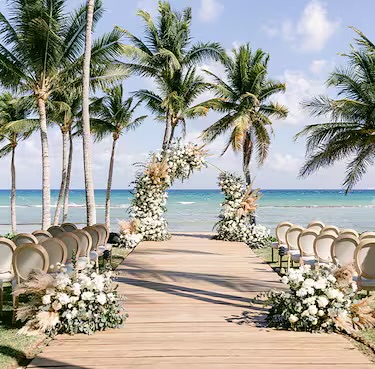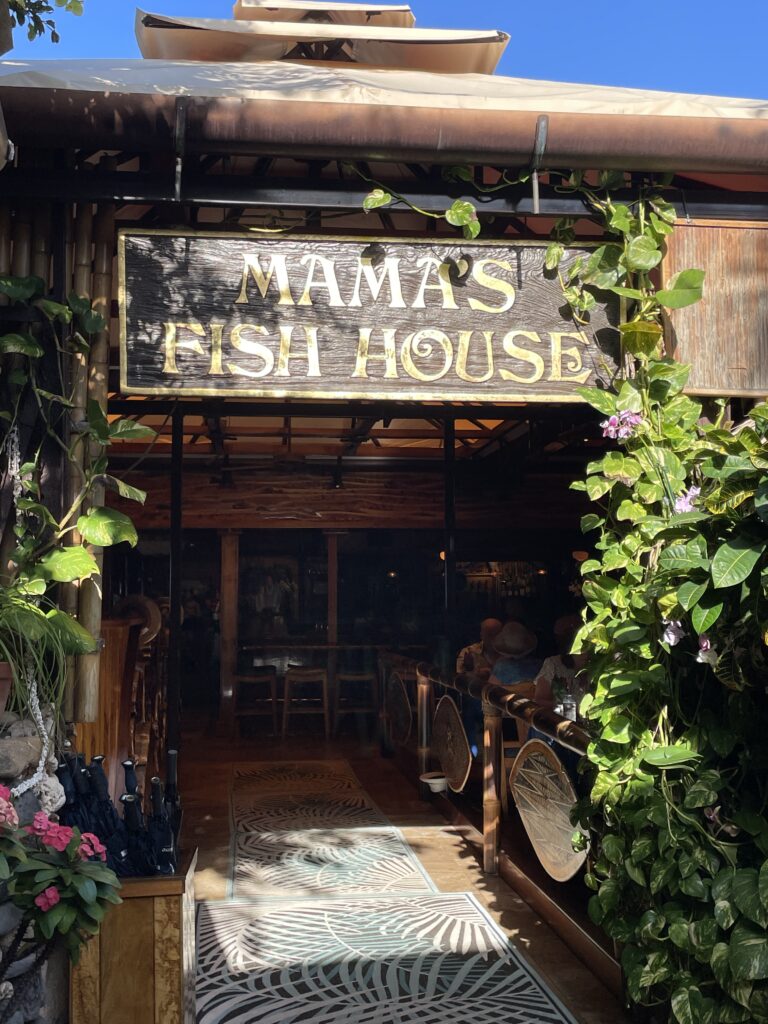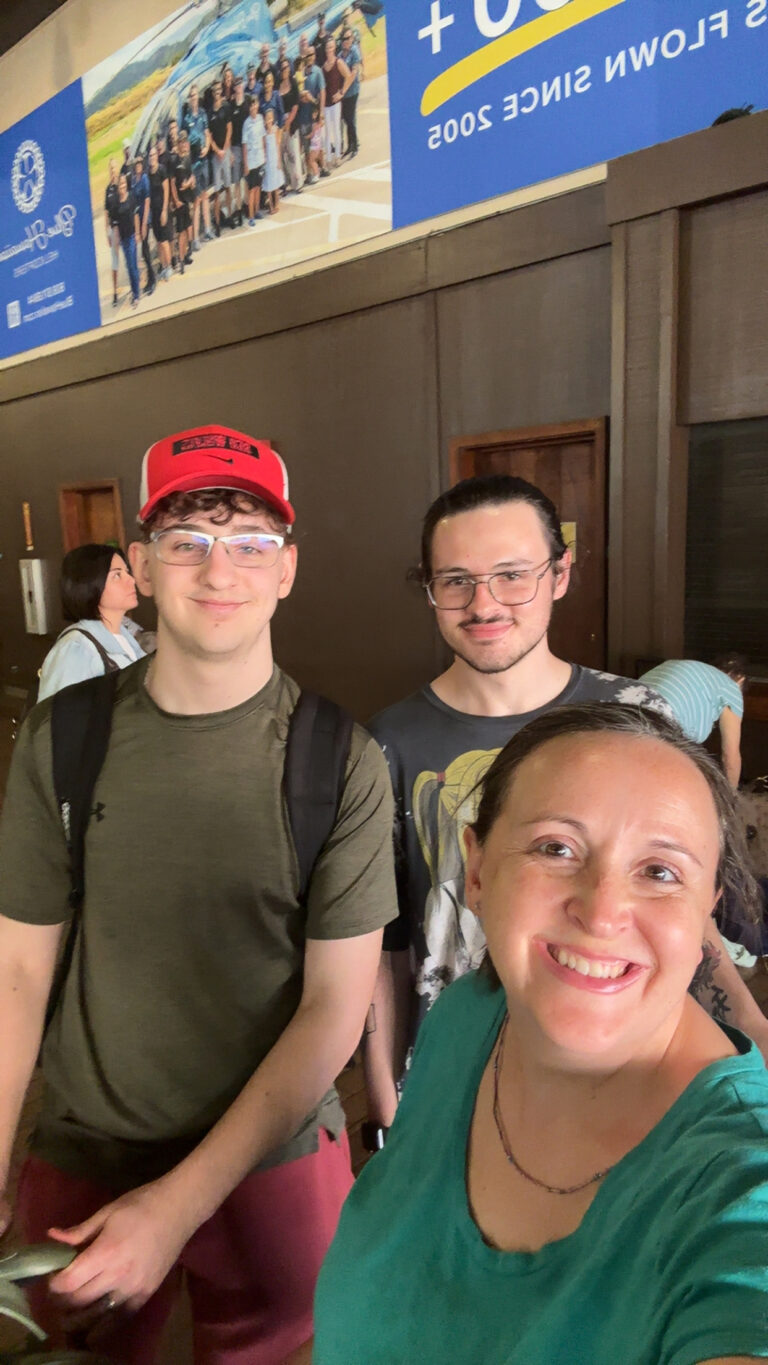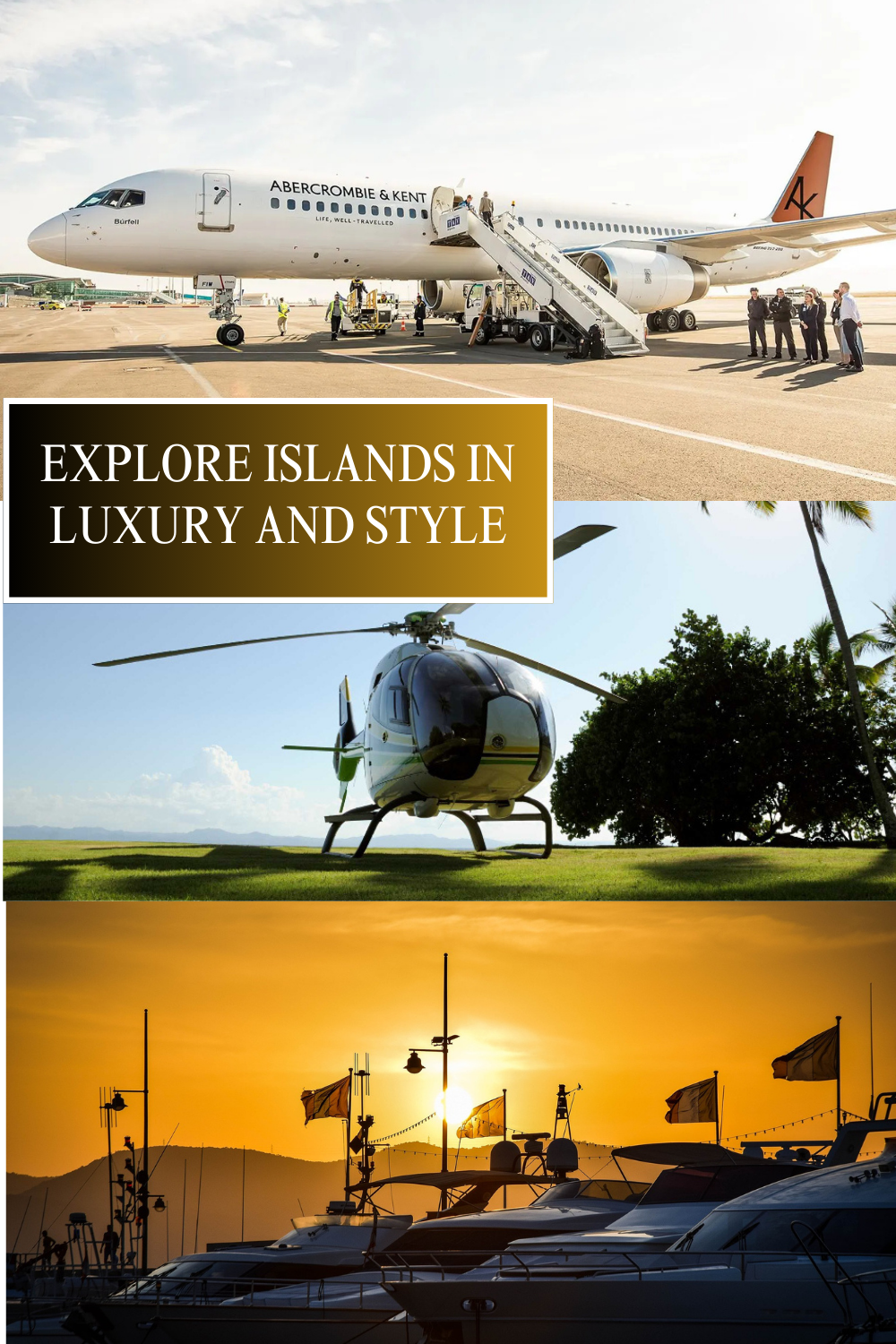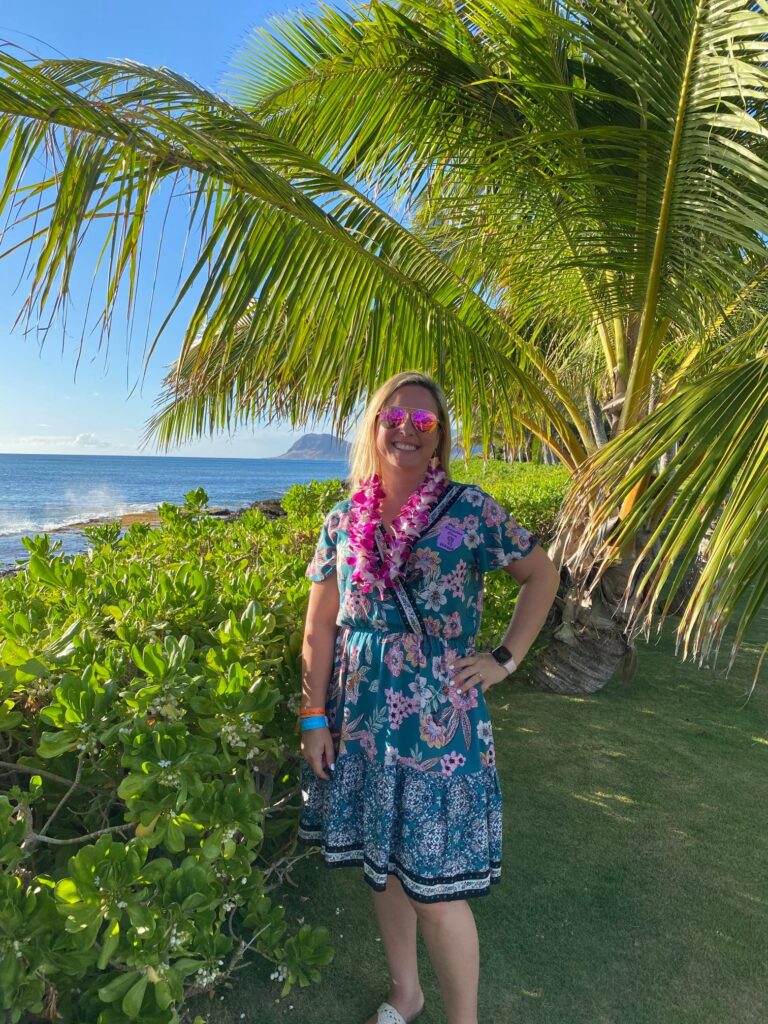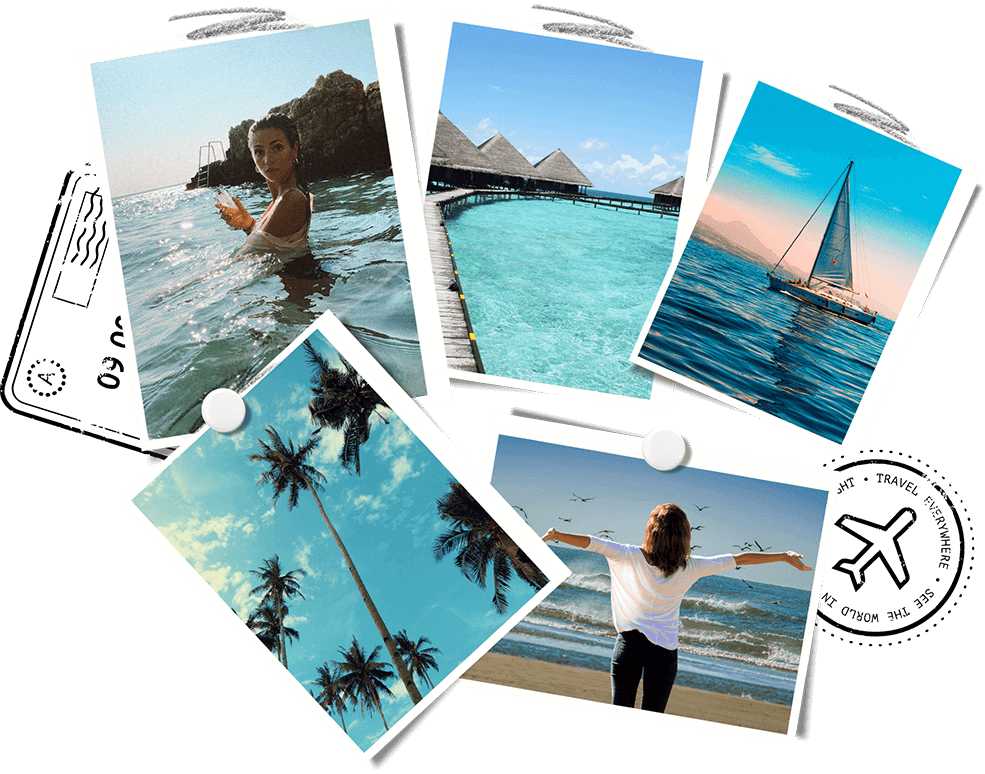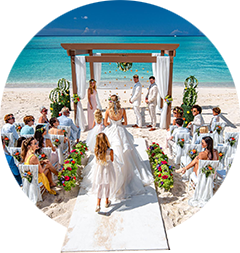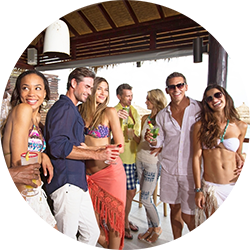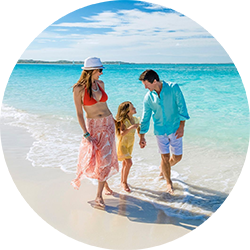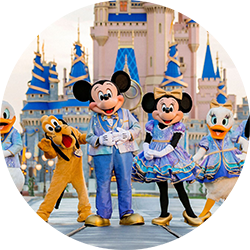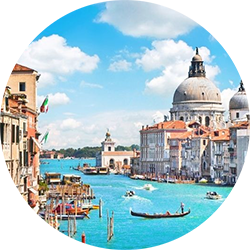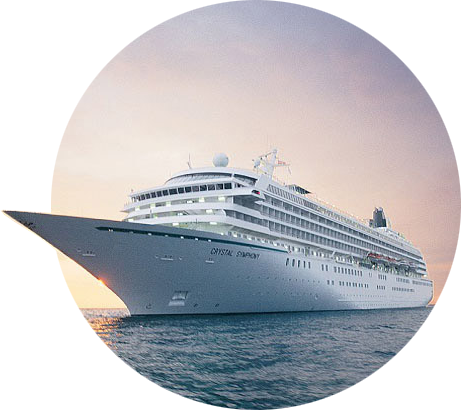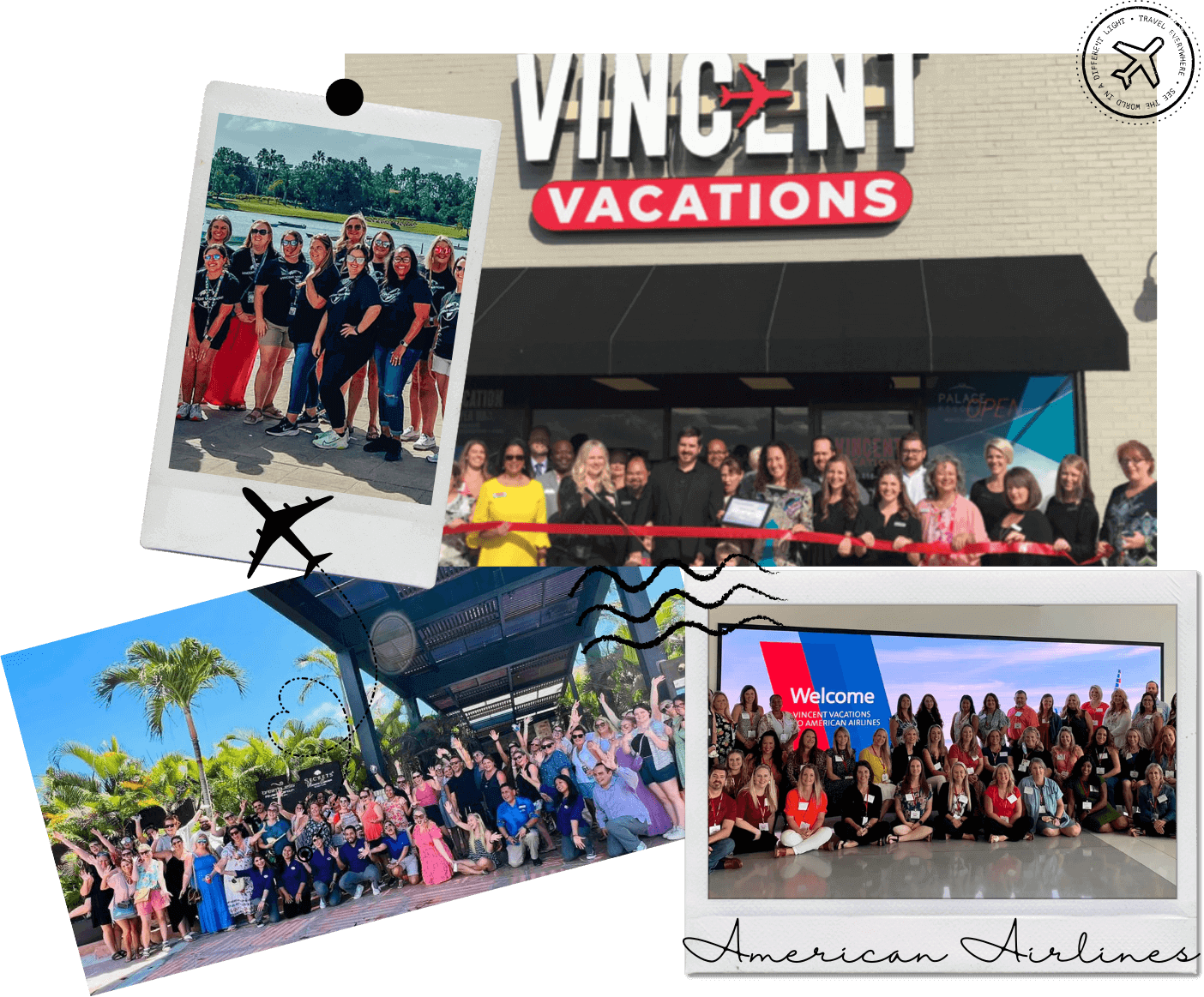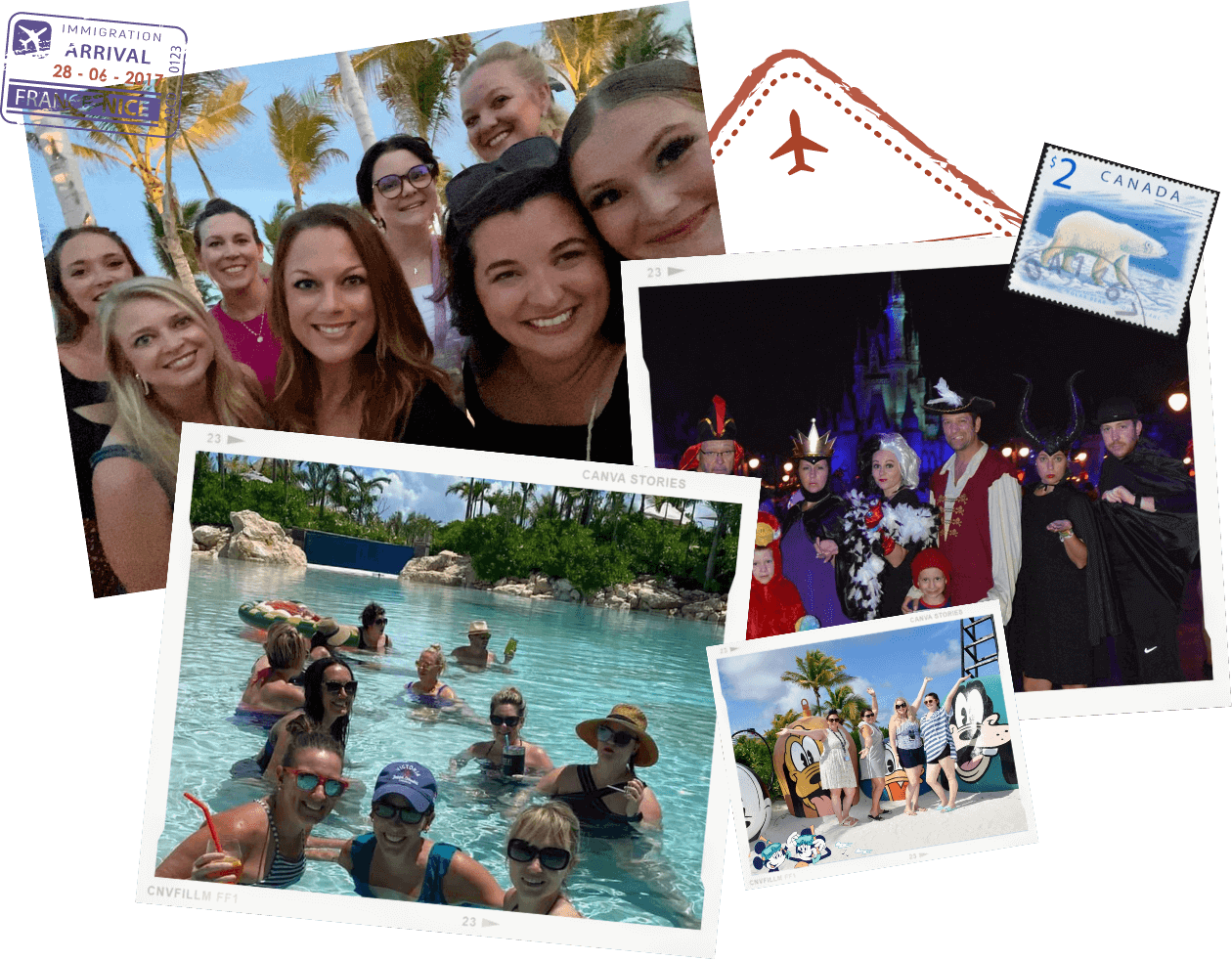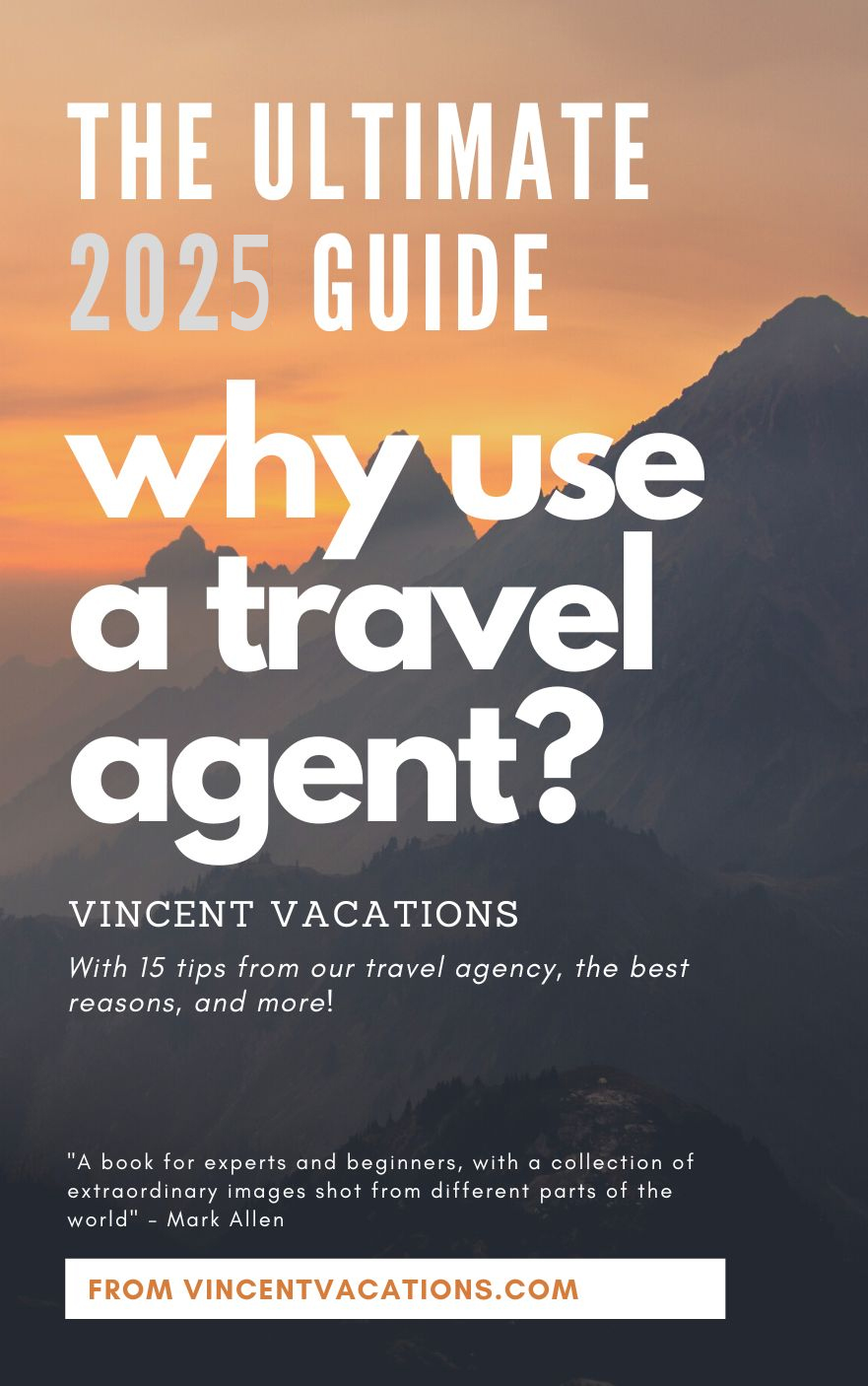We recognize that cruise vacations are not just an investment, but often the highlights of our lives, and we take that responsibility seriously. We want to ensure you have the best vacation experience.
Interested in a job in travel? Click here to learn: How to Become a Cruise Travel Agent
Overview
Introduction
There's enough beauty and activity in Hawaii to fill more vacations than we could take in a lifetime. With so much to choose from, first-time visitors need to be selective. Our recommendation is to settle first on the Hawaii you want to see. It might be beaches, a luau and nightlife; it might be rare orchids and hikes in the rain forest; it might be quiet countryside, small towns and scenic drives. Whatever the combination, there is almost certainly an island or islands best suited to your Hawaii vacation dreams.
Hawaii, quite literally, is growing. Active lava flows from Kilauea Volcano are forming new land daily. There's even a new island forming a few thousand feet/meters below the surface of the ocean, off the southeastern coast of the Big Island, that will someday become the newest Hawaiian island. In fact, it already has a name: Loihi.
Everyone will find something enjoyable in Hawaii, and different islands will appeal to different people. Each island is unique, with distinctive attractions, special places and geophysical features.
Here's a look at the eight primary islands and their major attractions:
Hawaii Island
Hawaii Island is commonly known as the Big Island for good reason. It's larger than all the other islands combined. But aside from Hilo (the county seat), Kailua-Kona (a popular visitor destination) and the luxurious resorts along the Kohala coast, it retains a rural flavor.
Major Destinations on the Big Island: the Kona coast; Kailua-Kona; Hilo; Hawaii Volcanoes National Park, with two active volcanoes (Mauna Loa and Kilauea); Mauna Kea (the world's tallest mountain).
Big Island Attractions: If you're into the outdoors, this is the place for you. Attractions include sandy beaches in shades of green, red and black; beautiful coral reefs; snorkeling; deep-sea fishing; gorgeous flowers, including most of the orchids for lei made in the state; cattle and horse ranches; horseback riding; mesmerizing landscapes; cascading waterfalls; golf; watersports; and hiking. Nightlife and shopping are limited.
Kahoolawe
Access to this former U.S. Navy bombing target is strictly limited. Much of the island remains unusable because of unexploded ordnance.
Kauai
Kauai is the oldest and northernmost of the inhabited Hawaiian islands. Nature is its biggest draw.
Major Destinations on Kauai Island: Waimea Canyon, Kokee State Park, Poipu, Lihue, Napali Coast, Princeville, Hanalei.
Kauai Island Attractions: Mountains; valleys; waterfalls; spectacular beaches; hiking; fishing; golf; whale-watching; kayaking and sailing; bird-watching; ziplining; and snorkeling, surfing and other watersports. Shopping and nightlife are limited.
Lanai
The smallest of the main islands is quiet and uncrowded. It is 98% privately owned by Larry Ellison, CEO of Oracle Corp. Tourism is now the mainstay of the economy.
Lanai Island Attractions: Sailing, fishing, golfing, ocean rafting, hunting and back-road exploring.
Maui
Maui is the second most-visited Hawaiian island, after Oahu.
Major Destinations on Maui Island: Haleakala National Park, Iao Valley, Hana, Ka'anapali, Kihei, Lahaina, Wailea and Wailuku.
Maui Island Attractions: Wonderful beaches; calm ocean bays; stunning mountain and volcano vistas; sugarcane fields; highland ranches; twisting mountain roads; whale-watching; upcountry agriculture tours; golf; hiking; ziplining; sailing and other boat excursions; deep-sea fishing; and watersports such as snorkeling, scuba diving, surfing, windsurfing and parasailing.
Molokai
This rural island is best suited for travelers who want to see the old Hawaii and unwind quietly.
Major Destinations on Molokai Island: Kaunakakai, Kalaupapa National Historical Park, Halawa Valley.
Molokai Island Attractions: Isolated beaches, mountains, waterfalls, deep-sea fishing, history, hiking and relaxing.
Niihau
This tiny, privately owned island is also known as the Forbidden Island. Home to about 200 native Hawaiians who live a traditional lifestyle, it is off-limits to visitors. Only those who book a tour with Niihau Helicopters can land there.
Oahu
Oahu is the political, social, economic and population hub of Hawaii. It attracts the most visitors of all the Hawaiian islands.
Major Destinations on Oahu Island: Downtown Honolulu, Waikiki, Diamond Head, Pearl Harbor, Hanauma Bay, the North Shore.
Oahu Island Attractions: City life, including theater, opera, museums, shopping, nightclubs and fine dining; lush greenery; beautiful beaches; great historic sites; sailing; surfing, windsurfing, kayaking and other watersports; golf; and hiking.
Geography
The state of Hawaii comprises eight main islands—Kauai, Niihau, Oahu, Maui, Molokai, Lanai, Kahoolawe and Hawaii—and the Northwestern Hawaiian Islands, a string of mostly uninhabited atolls, small islands and reefs that stretch across nearly 140,000 sq mi/362,598 sq km of the Pacific Ocean.
The Northwestern Hawaiian Islands harbor more than 7,000 species of undersea creatures, one-fourth of which are found nowhere else in the world. Former U.S. President George W. Bush designated this region Papahanaumokuakea Marine National Monument in 2006. It is the single largest conservation area in the U.S.
Of the main islands, Kauai, with tiny Niihau off its leeward coast, is the oldest and northernmost. As you travel south down the island chain, you'll find Oahu, Molokai, Lanai, Maui, Kahoolawe and Hawaii, or the Big Island. There, Ka Lae, also known as South Point, has earned distinction as the southernmost point in the U.S. The Hawaiian Islands are volcanic in origin, with active eruptions continuing on the Big Island.
Honolulu, the state capital, is located on Oahu. The other islands are sometimes referred to as the "Neighbor Islands."
History
Polynesians arrived in the Hawaiian Islands more than 1,500 years ago, one of many moves these people had undertaken over the centuries. Evidence suggests that these first settlers of Hawaii set out from the Marquesas Islands in present-day French Polynesia—and never expected to return there. Their oceangoing canoes were filled with domesticated animals (chickens, dogs and pigs), plants and seeds—everything they needed to start their new home. In time, the islands came to be ruled by a powerful hierarchy of chiefs and nobles, who oversaw elaborate agricultural projects and the construction of many ceremonial shrines and temples.
In January 1778, British explorer James Cook and his two ships reached Kauai. (This may have been the first Western contact with Hawaii, though another theory holds that a Spanish ship may have visited the area in the 1500s.) Cook's party traded with the locals and reported that the Polynesians were fascinated by anything made of iron. Common nails became valuable items for trade, and sailors used them to woo Hawaiian women, from whom they received a very cordial welcome. Unfortunately, this contact passed venereal disease to the Hawaiians, the first of many Western ailments that would devastate the population.
When Cook returned to the islands the next year, things didn't go as smoothly. A dispute arose when Hawaiians on the Big Island at Kealakekua Bay, Kona, took one of the ship's small boats. Violence broke out, and Cook was killed. For many years, the islands were known in the West by the name Cook gave them, the Sandwich Islands (after the Earl of Sandwich, Cook's benefactor who financed his voyages of exploration).
At roughly the same time that Europeans first came in contact with Hawaii, internal politics and warfare were also redefining the islands. Each island was ruled independently until King Kamehameha I (1758-1819) united them by force. The continuing presence of Westerners played a role in the wars: The armaments of the newcomers were a decisive factor in Kamehameha's victory. Greater encroachment by outsiders took place in the 1800s, with two rather divergent groups—Calvinist missionaries and whale-hunting seamen—leading the charge.
In the mid-1800s, another group, sugar planters, became a force in Hawaii. They gained control of large parcels of land, imported foreign workers and eventually, in 1893, orchestrated the overthrow of Queen Liliuokalani, the last reigning Hawaiian monarch.
The Hawaiian Islands were annexed to the U.S. in 1898, though the island election approving annexation excluded most native-born Hawaiians. Hawaii became a U.S. territory in 1900. In 1941, the Japanese attack on the Pearl Harbor naval base on Oahu brought the U.S. into World War II. Following the war, the movement favoring statehood gained strength, and on 21 August 1959, Hawaii became the 50th U.S. state.
Most of Hawaii's sugar plantations closed by the mid-1990s. Since then, crops have diversified. Farmers statewide now grow coffee, flowers, macadamia nuts and a wide variety of fruits and vegetables. Tourism now is the state's major industry.
Snapshot
Hawaii's foremost attractions are beaches, volcanoes, surfing, luau, lush scenery, waterfalls, Polynesian culture, ravishingly beautiful (and rare) tropical flowers and plants, hiking, relaxation, historical sites, shopping, watersports, deep-sea fishing and friendly people who exude the "spirit of aloha."
Potpourri
Aloha Oe, perhaps the most famous Hawaiian song, was written by Queen Liliuokalani, the last reigning monarch of the islands.
There is no "s" in the Hawaiian language, so the proper plural for lei is lei, luau for luau, and so forth.
Venture up 3,379-ft/1,048-m Lanaihale (Lanai's highest point) on a clear day, and you'll see Oahu, Maui, Molokai, Kahoolawe and the Big Island in one magnificent panorama.
Virtually all of the tropical fruits and flowers associated with Hawaii, including orchids, plumeria, pineapple, papaya and mango, were introduced from other countries.
Molokai claims the highest sea cliffs in the world. They rise nearly 4,000 ft/1,240 m along the island's northeast coast.
Hawaii has some 300 endangered plants and animals—which represents about one-quarter of all endangered species in the U.S. Both its state mammal (the humpback whale) and state bird (the nene or Hawaiian goose) are endangered.
Passed in 1972, Kauai County's "Coconut Tree Ordinance" prohibits the construction of buildings taller than 55 ft/17 m (four stories or roughly the height of a mature coconut palm). There are, however, two exceptions: the Kauai Marriott (which was built as the Kauai Surf in 1961, before the law was passed) and the St. Regis Princeville Resort (which is 11 stories, but eight stories go down the side of a cliff).
About 70% percent of Hawaii's population live on Oahu, which represents just 9% of the state's total land area.
Hawaii is the only state in the U.S. where coffee, vanilla and cacao (which is used to make chocolate) are grown commercially.
Hawaii is the only U.S. state that has royal palaces: Hulihee Palace in Kailua Village on the Big Island and Iolani Palace and Queen Emma Summer Palace in Honolulu on Oahu. King Kalakaua installed electric lights in Iolani Palace in 1887—four years before any were installed in the White House.
Overview
Introduction

Most commonly known as the Big Island, Hawaii Island is also known as the Orchid Isle and the Volcano Isle. Twice as big as all the other islands of the Hawaiian archipelago combined, Hawaii Island's size does not necessarily mean crowded and busy. Most of the island of Hawaii retains a rural flavor, and many residents are grateful to be removed from the urban bustle.
Most visitors to the Big Island congregate on the west side, primarily in sunny Kailua-Kona and along the majestic Kohala coast, but on the east side, in tropical Hilo, you will find a number of attractions and activities of interest as well. The landscape is varied, too, changing from beach to mountain and from dry desert to moist upland rain forest. Eleven of the world's 13 climate zones can be found there.
Visitors determined to see an active volcano will find one of the best bets on the Big Island: The world's most active volcano, Kilauea, has been erupting almost continuously since 1983. (You can watch the flowing lava safely, but the best viewing spots change daily.) You'll also find colorful beaches—golden, green, gray, black and white—and even a beach that disappears seasonally (between Keauhou and Kona, it is claimed temporarily by the tide). The deep-sea fishing and snorkeling are both great, and in some places excellent.
The Big Island also boasts Mauna Kea (the world's tallest mountain, if you count the portion below the surface of the sea); numerous large cattle and horse ranches (the Parker Ranch is the largest ranch in Hawaii); and more gorgeous flowers than you can imagine—most of the orchids for the leis made in the state are grown there. All of this peace and nature means that nightlife and shopping are limited to a few areas. Most visitors, if they go to the Big Island at all, stay for only a few nights, although those captivated by the island's low-key charm could stay much longer.
Must See or Do
Sights—Hawaii Tropical Botanical Garden; Hapuna Beach and the black-sand Punalu'u Beach; the iconic Hawaii Volcanoes National Park.
Museums—The H.N. Greenwell Store Museum gives a look into the daily life of Kona's early settlers.
Memorable Meals—Antelope filet and vistas of Hawaii Volcanoes National Park at Kilauea Lodge Restaurant; seafood and a relaxed vibe at Merriman's in Waimea; Hawaiian comfort food at Don's Grill in Hilo.
Late Night—Live music and dancing at Blue Dragon in Waimea.
Walks—A walk through Akaka Falls State Park, with its two striking waterfalls.
Especially for Kids—The Panaewa Rainforest Zoo & Gardens; horseback riding at Dahana Ranch.
Geography
Hawaii Island's geography runs to extremes. Barren, lava-covered areas, rolling valleys with tropical foliage, spectacular seaside cliffs and lush rain forest all can be found within a few hours of each other. Its lush, green eastern coast catches the wind and rain, but the western coast basks in the sun and offers the best beaches.
The five volcanic mountains that comprise the Big Island—Kohala, Hualalai, Mauna Loa, Mauna Kea and Kilauea—are the highest peaks in the state. They create a natural moisture barrier and some of the most stunning scenery on the island. The volcanoes, of course, are what created the Hawaiian Islands. That process continues today as Kilauea spews out molten lava, adding to the Big Island's expanse. It's the only place in the islands where you can get a close-up view of lava flows and venting steam craters—nature's creative power at work.
History
The first people to arrive in Hawaii probably came from Tahiti or the Marquesas Islands and landed along the southern shores of the Big Island around AD 500. Later settlers likely arrived from other islands in Polynesia.
Around 1790, Kamehameha the Great, a chief from Kohala on the Big Island and a fierce warrior, defeated his rivals and consolidated his control on the island of Hawaii. During the next few years, his army conquered the islands of Maui, Molokai and Oahu in an attempt to unite the islands, and by 1810, Kamehameha was recognized as king of all Hawaii. This was the founding of the Hawaiian monarchy, which lasted until 1893.
Capt. James Cook, the first Westerner to explore Hawaii, visited the Big Island in 1779. After various altercations between Cook's sailors and the Hawaiians, Cook was killed at Kealakekua Bay. Today, a monument on the shores of the bay marks the spot where Capt. Cook died.
After the death of Kamehameha the Great in 1819, the outside world began to take notice of the once isolated islands. Missionaries introduced Christianity at a time when alcohol abuse, Western diseases and the rapid breakdown of the ancient Hawaiian system had created a confused situation for the Hawaiians. The missionaries gained an easy foothold because they aligned themselves with the chiefs against some of these modern evils.
With the growth of the sugarcane industry in the early 1800s, the Big Island became Hawaii's biggest cane grower. Sugar planters turned to immigrant labor for help, bringing thousands of immigrants from China, Japan, Korea and the Philippines to Hawaii to work on the plantations. Over time, sugar planters and American businessmen brought about the annexation of Hawaii by the U.S. in order to provide a guaranteed protected market for their product. Hawaii became a state in 1959.
The sugar industry collapsed in the late 1990s and the mills and plantations closed. Hawaiians varied their crops to stay competitive: Macadamia nuts, tropical flowers, bananas, papaya, coffee and exotic tropical fruits are grown all over the Big Island. In addition, the Mauna Kea Observatory Science Complex and its numerous international telescope facilities have added a unique high-tech edge to the island's economic infrastructure.
Hawaii Island largely relies on tourism. The Kona and Kohala coast resorts continue to grow, and numerous private vacation homes and condominiums have been built by mainland and overseas investors.
Snapshot
The highlight of Hawaii Island is its landscape of mesmerizing beauty and stark contrasts, including dramatic volcanic mountains, lush rain forests, cascading waterfalls, sandy beaches of many colors and beautiful coral reefs.
Visitors who are looking for lively nightlife and high-end shopping will find what they crave on the Kona and Kohala coasts, while those looking for outdoor adventure, whether on land or water, will find no shortage of options.
Potpourri
This island's name is Hawaii, but it is called "the Big Island" so as to avoid confusion with the island state's name.
The Kona coast is the original location for the Kona coffee industry, where its ideal climate still produces the world-famous beans.
The Big Island has a whopping 266 mi/428 km of coastline, although much of it is inaccessible.
Ka Lae, also known as South Cape, is the southernmost point in the U.S. and is the place where the first Polynesian settlers landed.
Hawaii Island is the only Pacific island where it's possible to surf at the beach and snow ski on a mountain all in the same day.
On his 1866 visit to the Big Island, Mark Twain planted a monkeypod tree at the small town of Waiohinu. The original tree was toppled in a storm, but the roots sent up a new shoot. The tree survives as the "Mark Twain Monkeypod Tree."
The Big Island grows a little bit larger each day, thanks to the ongoing production of lava.
Although English is the official language of Hawaii, you may hear locals speaking pidgin English. It evolved from the merging of Hawaii's multiethnic groups. One term you may hear is "Howzit?" Basically, it means "How are you?" or "How is it going?"
Overview
Introduction
The impressive Hawaii Volcanoes National Park, with two active volcanoes (Mauna Loa and Kilauea), requires at least a half-day visit, and a full day (or even two) is better. Of the two volcanoes, Kilauea is much more accessible and is more active—it's been erupting continuously since 1983. Mauna Loa, with its challenging backpacker trails to the summit, is for the committed outdoors enthusiast.
The Kilauea Visitors Center is the place to start your tour of the park. After paying the admission fee (US$25 per car) and getting a map, walk over to the Volcano House for a first glimpse of the crater.
The nearby Volcano Art Center exhibits high-quality works by local artists.
Volcanic activity in the national park is unpredictable, varying daily (phone 808-985-6000 for recorded updates). You may be able to observe lava, and on some days you can get a much closer view. The prime place to see lava is at the viewing area at the end of Chain of Craters Road (the road ends because it, along with a visitors center, was wiped out by a lava flow). Marked trails lead to places where you can observe the flow—stick to designated areas. The trail can be treacherous. Wear appropriate footwear and bring a jacket should you end up taking longer than anticipated. Try to visit at dusk: The sun setting on the desolate landscape of hardened lava is spectacular, and the lava flowing into the sea can be best seen at night (flashlights are required to find your way back to your car). The trails close at 9 pm.
Check with park rangers on duty for latest eruption and lava-viewing details. It's a 45-minute drive to the end of Chain of Craters Road. From there, it can be a hike of 3 mi/5 km or more to the viewing site. Be prepared for rough, uneven terrain, volcanic fumes, heat, intense sun and no services of any kind. Occasional closures of various parts of the park are possible when the volcano is particularly active.
Crater Rim Drive provides access to most of the other viewing areas in the park. Worthwhile stops include Steaming Bluff; the Jaggar Museum (displays on the geology and physics of volcanic activity—note the olivine crystals in the building's columns); the Halemaumau Overlook (infants and those with respiratory problems should avoid this stop because of the sulfur); Devastation Trail (a forest killed in 1959 by a blanket of pumice ash); and the Thurston Lava Tube (a cave formed by lava that's in the midst of a cool, damp rain forest).
Hiking trails abound in the park: They take you into dense rain forests, around steaming calderas and along lava flows. One of the most memorable walks is in Kipuka Puaulu, called Bird Park because of the many native birds you can see flitting between lehua blossoms and high above in the trees. You can also walk into the Kilauea Caldera on a well-marked trail that starts at the Volcano House.
Ask the park rangers about other trails. You might also check before your trip with the Sierra Club's Hawaii chapter for information about its programs and excursions in the park and elsewhere on the Big Island. Phone 808-965-5460. http://www.hi.sierraclub.org/hawaii/mokuloa.html.
If you're not up to touring the park, consider a volcano flightseeing airplane or helicopter tour. There are accommodations within the park at the Volcano House. The inn offers a buffet lunch on the rim of Kilauea Crater that's open to guests and nonguests alike.
Hawaii Volcanoes National Park is 30 mi/48 km south of Hilo.
Contact us for the latest Hawaii deals.

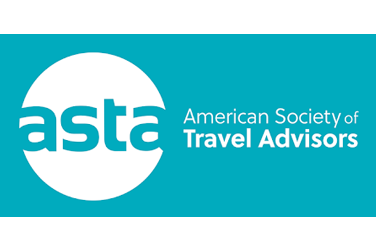
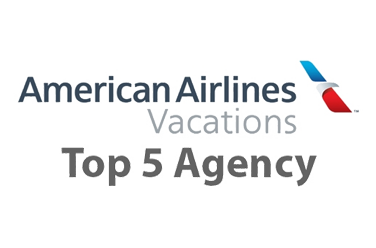
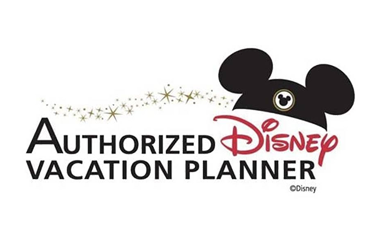
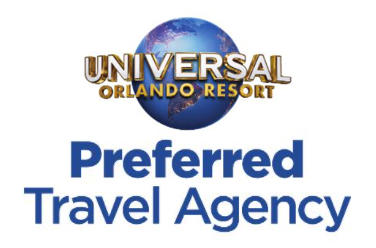

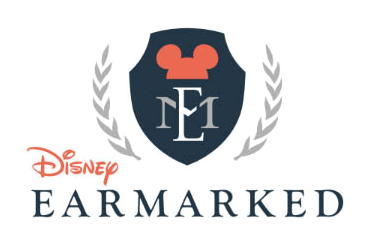

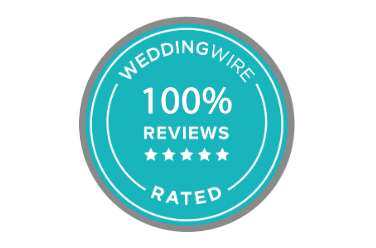
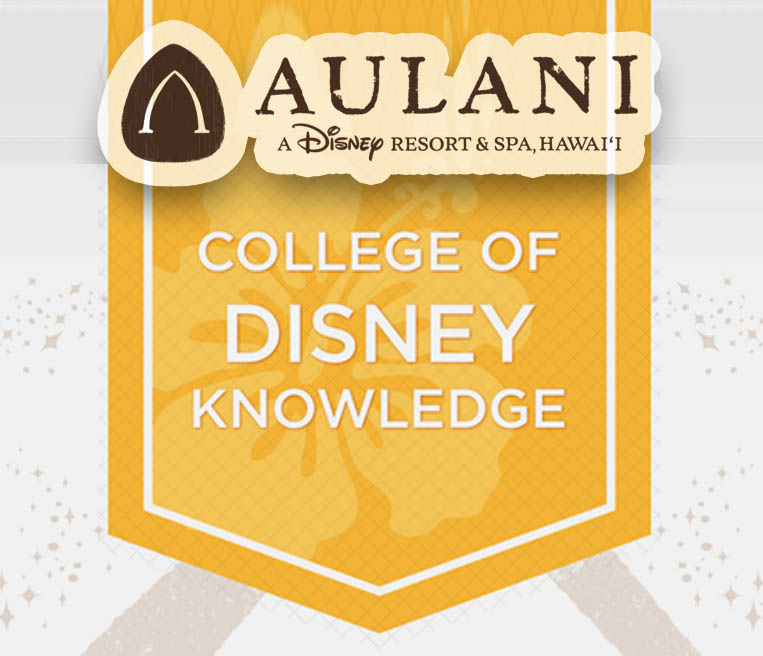
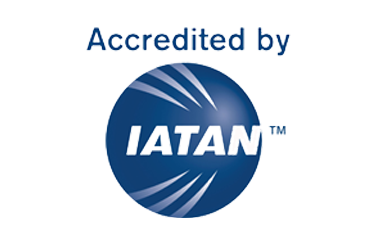

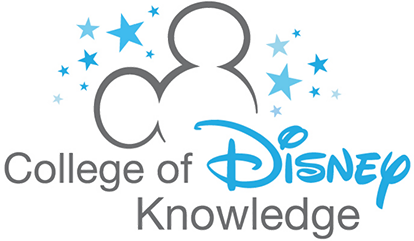

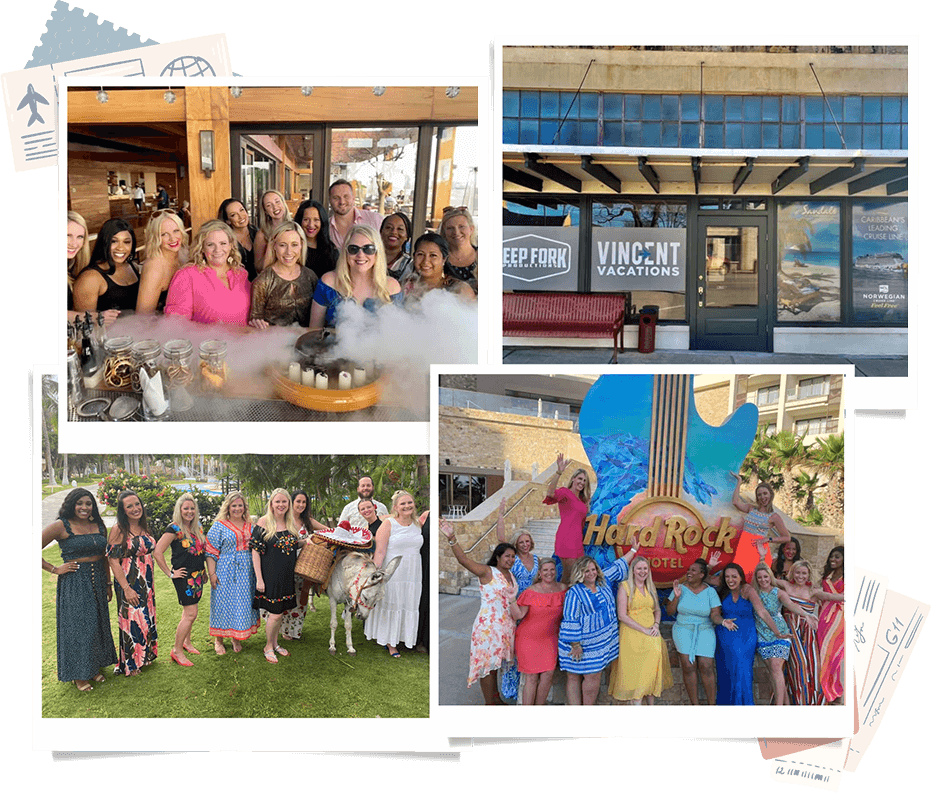
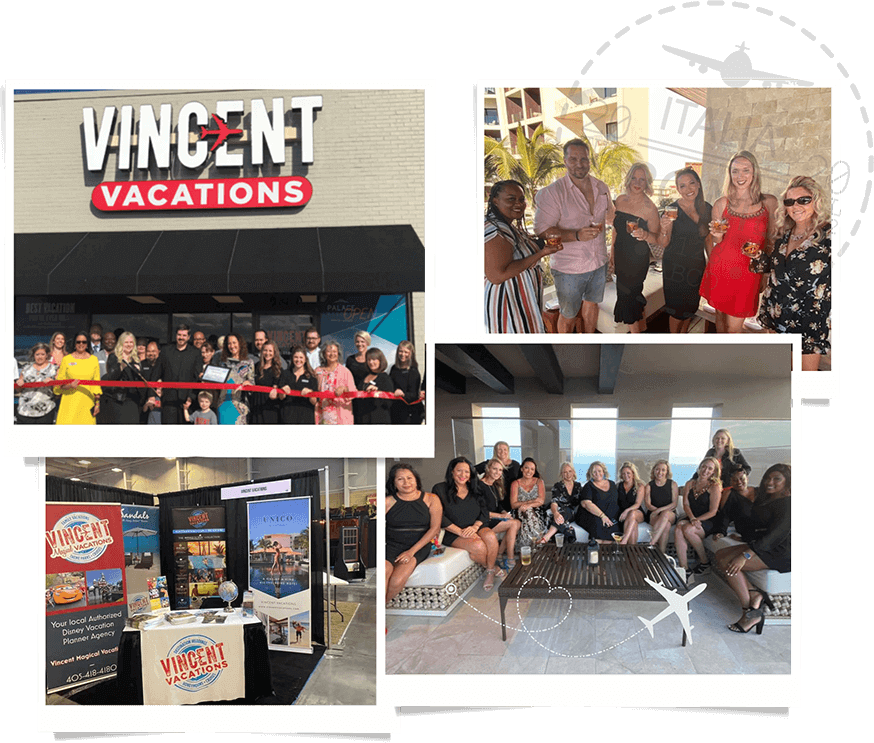
 CLIA Certified (Cruise Lines International Association)
CLIA Certified (Cruise Lines International Association)